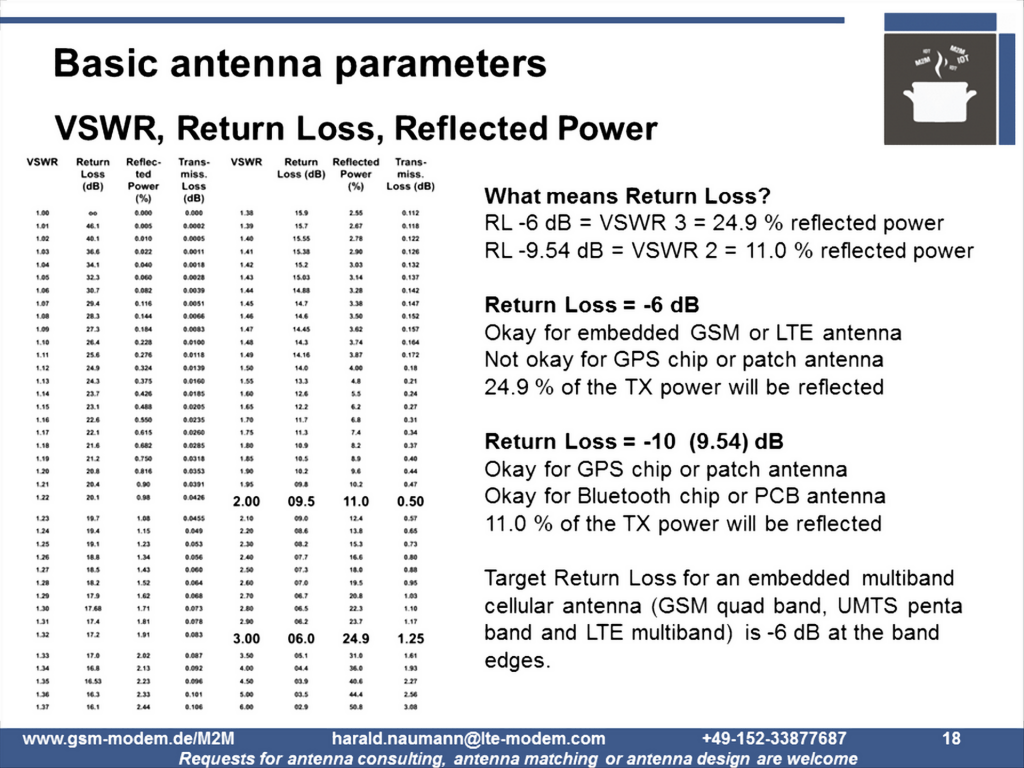If an RF signal is transmitted to an antenna, a part of the signal will be reflected. The return loss in the antenna data sheet indicates how much energy is reflected by the antenna. For mobile radio antennas, for LTE Cat-NB1, GSM, UMTS or LTE, a return loss of -6 dB at the band ends is required. At -6 dB, 25% of the energy is reflected from the antenna to the generator. For narrow band antennas, e.g. for Weightless, Sigfox, LoRaWAN or GPS/Glonass, a return loss of -9.5 dB is targeted. Usually the -9.5 dB are rounded to -10 dB.
 The power that an antenna actually radiates (PAnt) is calculated with the parameter t(tau), which in turn is calculated from the input reflection factor (S11).
The power that an antenna actually radiates (PAnt) is calculated with the parameter t(tau), which in turn is calculated from the input reflection factor (S11).
The lower the input reflection factor of an antenna, the more power it can radiate. The above equation shows that between an input reflection factor of -4 dB and -15 dB there is a delta in the radiated power of 2 dB. This 2 dB more or less – and thus also more or less range – is something that every IoT developer has only in his hands with the selection of the antenna. An input reflection of -6 dB is aimed for with integrated antennas. Internal antennas for LTE Cat-NB1 in band 8 or 20, e.g. from Antenova, on the other hand, offer an input reflection of better than -15 dB in almost the entire band.
Standing wave ratio SWR
The standing wave ratio (VSWR – Voltage Standing Wave Ratio or SWR only) was previously used as a parameter in high-frequency technology to assess antennas, among other things. A low standing wave ratio value indicates that the antenna sends little energy back to the generator (radio module). Standing wave ratio and return loss can be directly converted.
| Standing wave ratio | Return loss [dB] |
| 1.5 | 14 |
| 2 | 9,54 |
| 3 | 6 |
| 4 | 4,4 |
The return loss can be calculated from the standing wave ratio of an antenna and vice versa.
A standing wave ratio of 1.5 will be difficult to find with wideband antennas for mobile radio. With LoRaWAN or Sigfox, on the other hand, this is not impossible. However, such good values are usually not feasible with the smaller PCB areas in portable devices.
Has this article series piqued your interest? Do you plan your own LPWAN IoT device? Do you plan to deploy IoT devices with embedded antennas? Do you have an IoT prototype and need to optimise the design or minimise the price? If you have answered “YES” to any one of these questions then please do not hesitate to drop an email to harald.naumann (at) lte-modem.com and to ask for a proposal or some engineering services to make your IoT idea a cost-effective reality.
